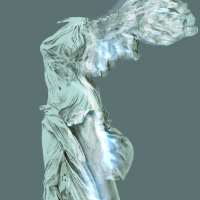
On 12 June 2020 the Trademarks Law Cap 268 (as amended) (L 63(I)/2020) was published in the Official Gazette, implementing the EU Trademarks Directive (2015/2436) into Cypriot law. The new directive aims to accommodate the modern business environment by standardising the rules applicable in EU member states in order to:
- facilitate transnational company activities;
- improve cooperation among trademark offices; and
- support anti-counterfeiting.
This article discusses the most notable amendments.
Graphical representation no longer required
Previously, a graphical representation was an essential requirement for registration and had to be included in the application for any kind of trademark. This requirement has now been removed in order to make it easier for interested parties to file and register non-traditional trademarks, such as sound marks (which cannot be represented graphically due to their nature). The amended law requires that an applied-for mark is “capable of being represented on the register in a manner which enables the competent authorities and the public to determine the clear and precise subject matter of the protection afforded to its proprietor”.
Ability to submit non-traditional trademarks
The previous regime provided only for word and figurative marks. The amended law has added non-traditional marks to the list, including:
- shape marks;
- sound marks;
- motion marks;
- colour marks; and
- pattern marks.
Distinctive trademark classification schemes
Trademark owners should ensure that all goods and services for which a mark is or will be used are included within the class specifications filed in order to ensure that the desired scope of protection is achieved. Further, all goods and services must be classified in conformity with the system of classification established by the Nice Agreement Concerning the International Classification of Goods and Services for the Purposes of the Registration of Marks. The relevant provision states that goods and services should be identified with sufficient clarity and precision so that the extent of the protection can readily be determined.
Opposition period extended
A notable amendment is the extension of the opposition period from two to three months. Parties now have three months to reach an amicable settlement (the ‘cooling-off period’) before filing supporting documentation against the opposition (this may be extended to six months on request). If the parties reach an amicable settlement prior to the publication of the opposition judgment, the opposition will be archived and the procedure will end without a judgment.
Protection period extended
The expiration date for trademarks has been extended from seven years to 10 years. Renewals also apply for 10 years.
Power of attorney no longer required
Under the previous regime, a power of attorney granted to a lawyer was required to register a trademark. The amendments have abolished this requirement and replaced it with a requirement to include a written declaration applications for registration.
New timeline

For further information please contact us.













